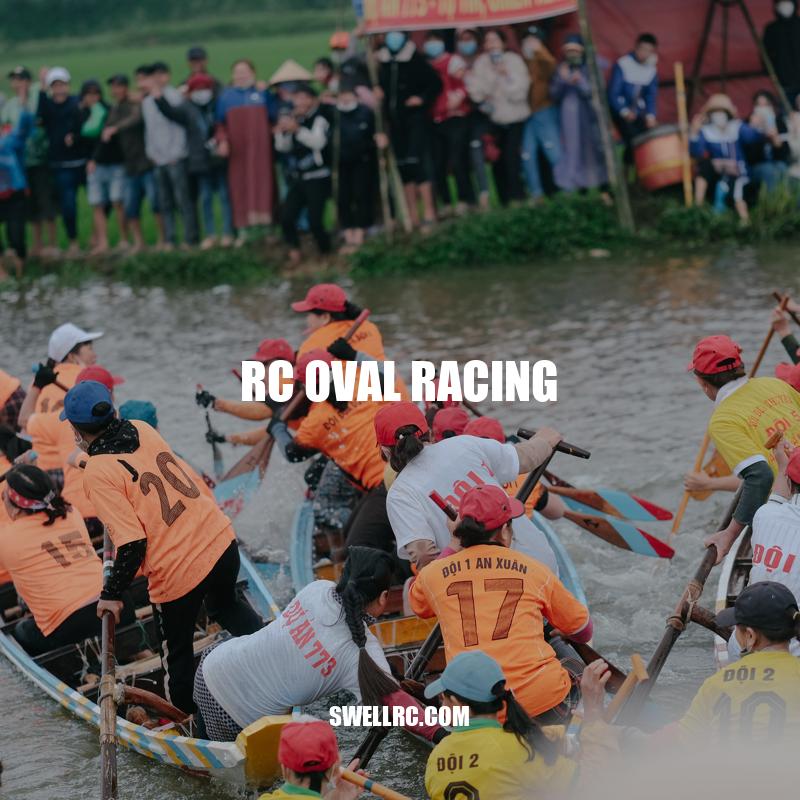Beginner’s Guide to RC Oval Racing
RC Oval Racing: A Beginner’s Guide
RC oval racing is a thrilling and exciting hobby that is enjoyed by people of all ages. It involves racing radio-controlled (RC) cars around an oval track made of dirt, concrete, or even carpet. The sport requires skill, practice, and patience, but the payoff is worth it. If you’re interested in getting started with RC oval racing, this beginner’s guide will help you get started.
To begin, you’ll need to invest in some equipment. The most important piece of equipment is the RC car itself. There are many different styles and models to choose from so it’s crucial to take your time in selecting the right one for your needs. Additionally, you’ll need a transmitter and receiver to control the car, a battery to power it, and a charger to keep the battery charged. It’s also a good idea to have some spare parts and tools on hand in case of accidents or emergencies. Once you have all the equipment you need, it’s time to start practicing. You can find a local RC club or track in your area, or set up your own track at home. The key to improving your skills is to practice regularly. As you become more skilled, you can start experimenting with different setups for your car such as tires, shocks, and suspension. There are many tips and tricks that can help you become a successful racer, so don’t be afraid to try new things and learn from others. With patience and dedication, you can become a skilled RC oval racer in no time.
RC Oval Racing Equipment
Types of RC Cars
There are several types of RC cars that are suitable for oval racing. Some of the most common types include:
- 1/10th Scale Oval Cars
- 1/18th Scale Oval Cars
- 1/24th Scale Oval Cars
- 1/10th Scale Short Course Trucks
- 1/8th and 1/10th Scale Nitro or Electric On-Road Cars
Transmitters and Receivers
The transmitter and receiver are the devices that allow you to control your RC car. There are several types of transmitters and receivers available, but the most common type is the two-channel system. Some of the features to look for when choosing a transmitter and receiver include:
- Number of channels
- Range
- Compatibility with your car
- Price
Batteries and Chargers
The battery is what powers your RC car, and you’ll need a charger to keep the battery charged. When choosing a battery, make sure to check the voltage and capacity to ensure that it is compatible with your car. Some batteries are designed for specific types of racing, so keep this in mind when making your selection. Additionally, when choosing a charger, make sure it is compatible with your battery type and has the capacity to charge your battery efficiently.
Spare Parts and Tools
It’s always a good idea to have some spare parts and tools on hand in case of emergencies. Some of the most common spare parts include:
- Tires
- Shock absorbers
- Suspension parts
- Bumper
- Bearings
Make sure to also have the necessary tools to repair or maintain your car. Some essential tools include wrenches, pliers, screwdrivers, and a tire gauge.
RC Racing Websites
There are several websites dedicated to RC racing, and they can be a great resource for beginners. Some of the best websites for RC oval racing include:
- RC Racing TV
- LiveRC.com
- RC Car Action Magazine
- RC Car Kings
These websites offer a wealth of information on all aspects of RC oval racing, including news, reviews, and tips for improving your skills. Additionally, you can find information on upcoming races and events, as well as connect with other racers in the community.
What are all the different types of RC cars?
There are several types of RC cars available in the market today. Here is a quick overview:
| Type | Description |
|---|---|
| On-road cars | Designed for smooth and flat surfaces like pavement or asphalt. |
| Off-road cars | Built with larger wheels and sturdier parts to handle rough terrain like dirt, gravel or grass. |
| Drift cars | Have slick tires and a low center of gravity to slide around corners at high speed. |
| Buggies | A cross between on-road and off-road cars, with a more streamlined design suitable for both types of surfaces. |
| Trucks | Can be either on-road or off-road, with bigger and more powerful motors for hauling and towing. |
If you are interested in purchasing an RC car, there are numerous websites and stores offering a wide variety of models. Some popular options include HobbyTron, Tower Hobbies, and RC Planet.
Getting Started with Practice
Join an RC Club
One of the best ways to get started with RC oval racing is to join an RC club or track in your area. RC clubs and tracks offer opportunities to practice and race with other beginners and experienced racers. You can also make new friends and learn from experienced racers.
Set Up a Track at Home
If you don’t have an RC club or track in your area, you can set up your own track at home. You can use materials such as plywood, PVC pipes, and carpet to create your own oval track. This can be a fun and challenging project and a great way to practice whenever you want.
Find an Online Community
There are plenty of online communities dedicated to RC oval racing, and they can be a great resource for beginners. Some of the most popular online communities include:
- RC Universe
- RC Groups
- Reddit RC Cars
These communities offer a place to connect with other racers, ask for advice, and share experiences. You can also find information on upcoming races and events and meet other racers in your area.
Interesting Facts
Did you know that RC oval racing is one of the oldest forms of RC racing? Oval racing has been around since the 1960s and was originally known as slot car racing. Over time, the popularity of RC oval racing has grown, and it is now one of the most popular forms of RC racing.
RC Oval Racing Tracks
RC oval racing tracks come in a variety of sizes and materials. Here are some common types of tracks:
| Type of Track | Size | Material |
|---|---|---|
| Dirt | 1/10th Mile to 1/5th Mile | Loose Dirt |
| Asphalt/Concrete | 1/10th Mile to 1/4th Mile | Smooth Asphalt or Concrete |
| Carpet | 1/10th Mile to 1/3rd Mile | Artificial Carpet |
Each type of track requires different tires and setups for your RC car, so make sure to do your research before race day.
How do you race oval tracks?
When racing on an oval track, there are a few key things to keep in mind:
1. Find the fastest line: The shortest distance around the track is usually the fastest. Experiment with different lines until you find the one that works best for you.
2. Smooth is fast: Try to maintain a smooth, consistent speed through the corners. Sudden changes in speed or direction can lead to loss of traction and slower lap times.
3. Look ahead: Keep your eyes focused on the track ahead of you. This will help you anticipate any upcoming turns or obstacles and adjust your speed accordingly.
4. Take care of your tires: Oval tracks tend to be tough on tires, so make sure you have a set of quality tires and keep them properly inflated and aligned.
5. Practice makes perfect: The more time you spend on the track, the better you will get. Don’t be afraid to experiment with different driving techniques and setups to find what works best for you.
If you’re looking for more detailed information on oval track racing, check out websites such as Oval Track News or RacingJunk.com. These sites offer a wealth of information on everything from driving techniques to equipment and setup. Additionally, products like iRacing and RaceRoom offer virtual experiences that can help you hone your skills on oval tracks.
Tips for Success
Watch and Learn
One of the best ways to improve your skills in RC oval racing is to watch other racers and learn from their techniques. Here are some tips for watching and learning:
- Observe how racers take turns, accelerate, and brake.
- Pay attention to how they set up their cars and make adjustments between races.
- Ask experienced racers for advice and feedback on your own technique and performance.
Experiment with Setups
RC oval racing requires a lot of trial and error when it comes to finding the best setups for your car. Be willing to experiment with different setups and make adjustments based on the track conditions and your own performance. Here are some common setups to experiment with:
- Shocks: softer for bumpy tracks, harder for smooth tracks.
- Tires: slicks for smooth tracks, grooved for loose tracks.
- Suspension: stiffer for high speeds, softer for more control.
Practice Regularly
Just like any other sport or hobby, RC oval racing requires regular practice to improve and master your skills. Set aside time each week to practice and race, and make sure to vary your practice routine to include different types of tracks and setups.
Interesting Facts
Did you know that there are world championships for RC oval racing? The IFMAR (International Federation of Model Auto Racing) World Championships for RC oval racing are held every two years and bring together the best RC racers from around the world.
Products to Consider
If you’re serious about RC oval racing, there are a few products you may want to consider investing in:
- A high-quality RC car with good parts and materials.
- A computerized radio system for precise control and customization.
- A battery charger with fast charging times and multiple charging capabilities.
How do you develop racing skills?
Developing racing skills requires a combination of factors, including practice, physical fitness, mental focus, and coaching. Here are some tips to help you improve your racing skills:
- Practice regularly to improve your driving techniques and reaction time on the track.
- Work on improving your physical fitness through regular exercise and a healthy diet to enhance your stamina and endurance during races.
- Maintain mental focus by staying calm and avoiding distractions while driving on the track.
- Consider getting a coach or taking racing lessons to learn advanced techniques from experienced professionals.
- Use simulators and other training software to hone your skills and improve your performance.
If you’re looking for more information on developing racing skills, check out websites like speedsecrets.com or purchase products like Ross Bentley’s “Speed Secrets” book series, which offer valuable insights and tips for improving racing skills.
Conclusion
RC oval racing is an exciting and fun hobby that anyone can enjoy. Whether you’re a beginner or an experienced racer, there’s always something new to learn and improve upon. By following the tips in this guide, you can get started with RC oval racing and be on your way to becoming a skilled and successful racer.
Remember to watch and learn from other racers, experiment with different setups, and practice regularly to improve your skills. Don’t be afraid to try new things and take risks – they may just pay off in the end.
Above all, enjoy yourself! RC oval racing is a hobby that should be about having fun, making friends, and enjoying the thrill of the race. So grab your car, head to the track, and let the races begin!



